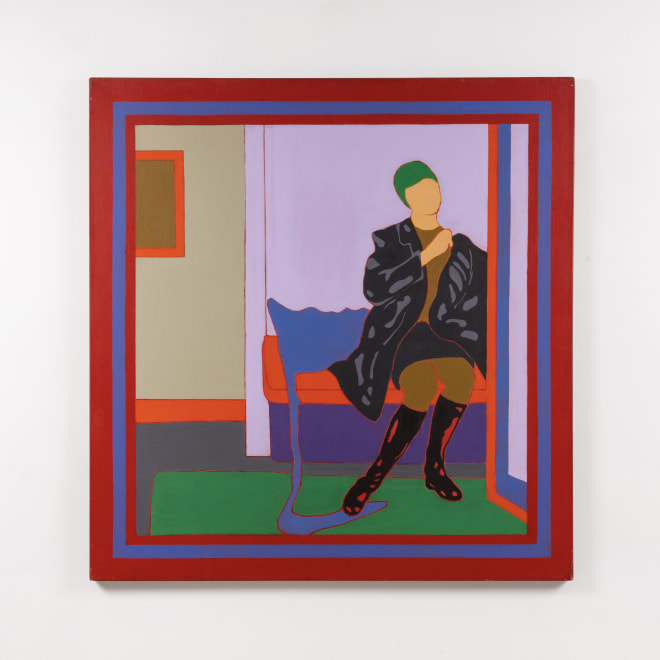Erica Rutherfordwas born in 1923 in Edinburgh, Scotland. She was one of perhaps a handful of British female Pop Artists working in the 60s and 70s and one of the first openly transexual British artists.
At the age of 14, Rutherford left home to enroll in Dartmouth Royal Naval College, followed by a year apprenticing as a cadet on the HMS “Conway” at Liverpool, England. Leaving the Navy in 1938, Rutherford pursued an interest in acting, enrolling in the Royal Academy of Dramatic Arts. Acting roles soon followed, and Rutherford spent the early years of the Second World War touring army camps and performing for the soldiers. Rutherford would marry four times, the first being with Chloe Clough in 1942. They would have a daughter the following year, but separated in 1944.
The wartime period inspired Rutherford’s interest in fine art, and she enrolled at the Slade School of Fine Art in London to study drawing, sculpture, and theatre design. Further education in historic costume design was pursued at the Central School of Arts and Crafts in London, as was drawing and painting at l’Académie Julien in Paris, France.
She emigrated to the small province of Prince Edward Island, Canada in the early 70s, where she lived and worked up until her death in 2008. Although gender dysphoria had plagued Rutherford her entire life, it was in Canada that she decided to begin to present as a woman, and to consider gender reassignment surgery. Rutherford’s transition would lead to the end of her fourth marriage as such, with the two separating in 1975. The two would remain close, co-parenting their child together. The following year, at the age of 53, Rutherford received surgical treatment in St. Louis, Missouri, which would complete her transition to become Erica.
The metamorphosis from male to female was documented by the artist in both text and image and Rutherford began a series of self-portraits dressed as a woman in 1970, a series which occupied her for almost a decade. Her work is of the same calibre as that of Pauline Boty and Evelyne Axell, two other leading pioneers of pop, but done with an explicitly self-representational aesthetic.
Rutherford was an exceptional painter, but she was far from prolific and there are very few great paintings from her Pop period (out of a studio of about 120 works, only three painted self-portraits remain from this date). Her work will be included in Tate’s Women in Revolt! (2023-2024) and was recently acquired by the National Portrait Gallery, London.

